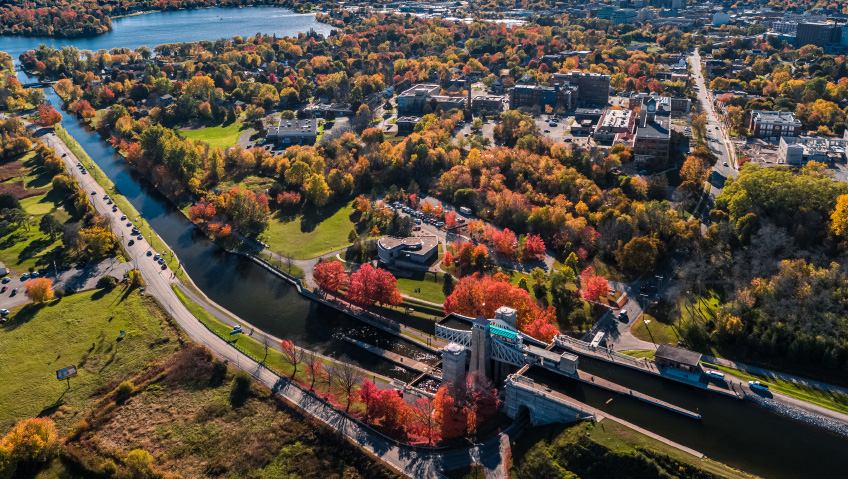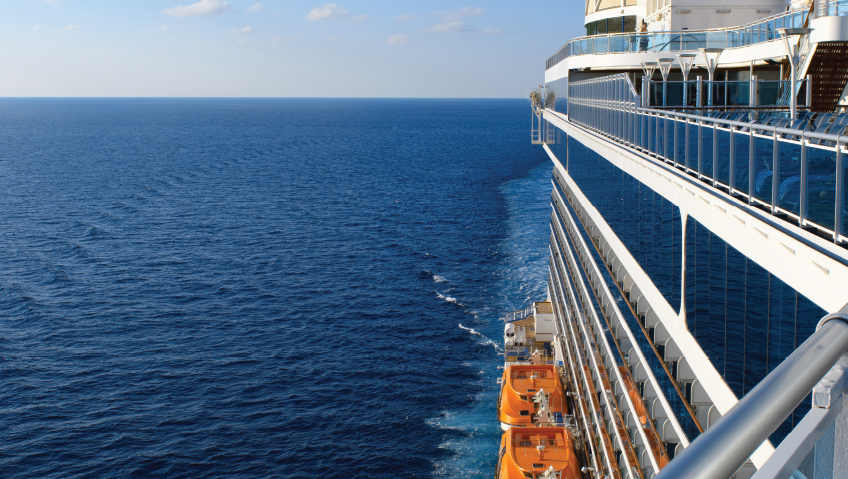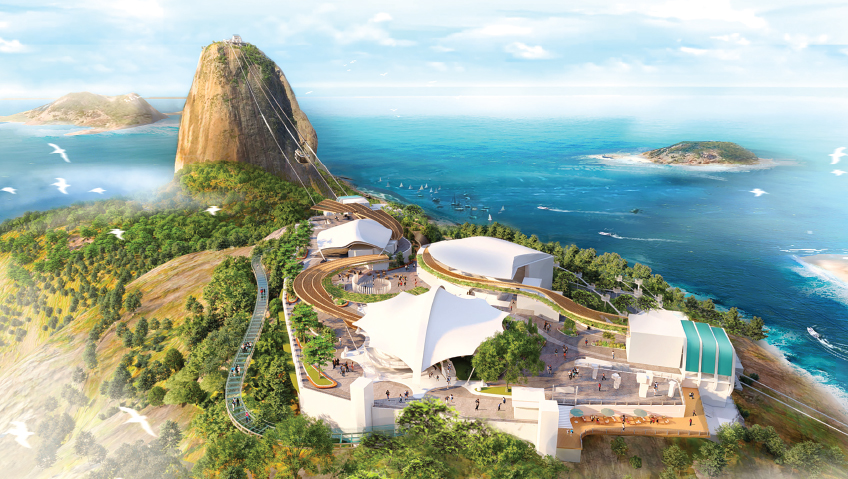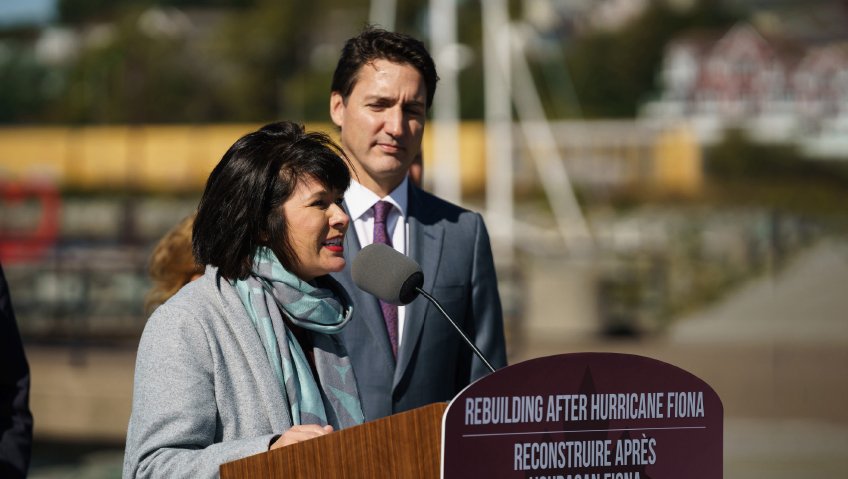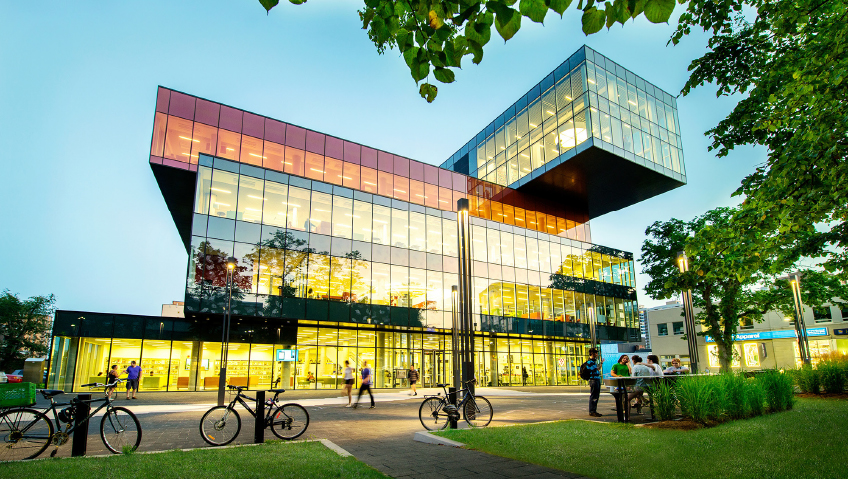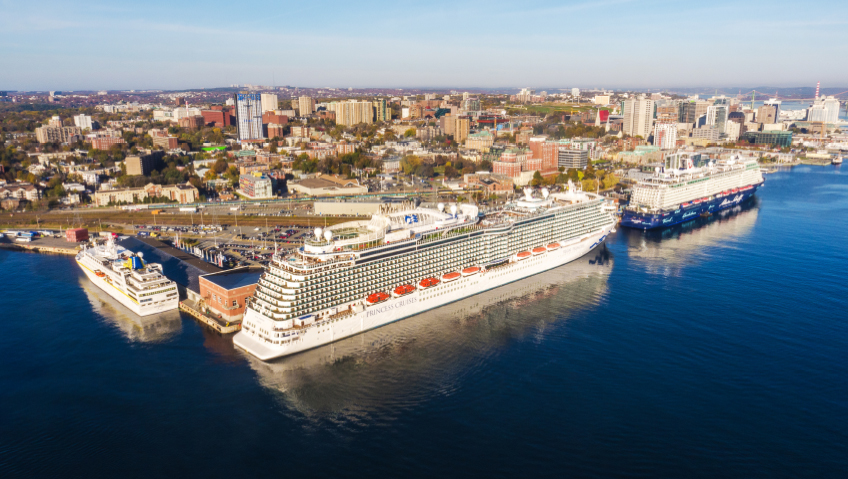With stunning scenery to appreciate both en route and at the destination, Peterborough & the Kawarthas marries natural beauty with a thriving and vibrant city. Conveniently located between major city centres Toronto and Ottawa and the northeastern United States, Peterborough & the Kawarthas also boasts the Trent-Severn Waterway, a National Historic Site of Canada and one of the world’s best integrated navigation systems complete with numerous marinas and lock stations for those choosing to arrive via boat. The area is poised for sustainable growth, setting the stage to become the most innovative and sustainable community and economy in Ontario. In Peterborough & the Kawarthas, sustainable prosperity is possible.
Combining natural beauty with a bustling metropolis bordered by beautiful cottage country, Peterborough & the Kawarthas’ history of innovation and business mindset dates back to Thomas Edison in the 1890s and the founding of the Edison General Electric Company. Of course, much has changed since then, but the area’s commitment to industry and advancement continues today, with internationally renowned Fleming College and its Kawartha Trades and Technology Centre, and Centre for Advancement of Water and Wastewater Technologies as well as Trent University, one of Canada’s top universities, and home to Cleantech Commons, set to become Canada’s premier clean technology research and innovation park, leading the way.
A number of other cutting-edge, technology-driven enterprises also look to expand in the area, positively impacting the future economy as they benefit from the region’s longstanding reputation for diligence, cooperation, and innovation.
A few of these thriving enterprises include Rolls Royce, BWXT, the Canadian Canoe Museum, Fairlife, and Peterborough Airport (CYPQ). The airport is implementing an Airport Master Plan Update that will take into account developing market trends and act as a visionary roadmap for the next 15 years, highlighting prospective commercial opportunities to boost the total economic and social value it brings to the region.
Prior to COVID, Peterborough & the Kawarthas Economic Development (PKED) had created an economic development strategy for 2020 to 2024, labelling it Future Ready to address the region’s ability to adapt to world economic forces disrupted by technology and demographic shifts.
“We focussed on four key objectives: promoting for investment, entrepreneurship, leveraging the region’s urban and rural assets, and ensuring the right education systems were in place to create that talent line for the future,” explains Rhonda Keenan, President & CEO, Peterborough & the Kawarthas Economic Development. “It was focused on innovation and sustainability and was ready to kick off in 2020. And then of course COVID happened, and it blew up everything.”
While the entire world was seriously impacted by the COVID-19 pandemic, tourism and hospitality are still rebuilding slowly after several years of travel restrictions not only around the world, but within the province of Ontario. To address the effects brought on by the pandemic, the 2020–2024 Future Ready plan was modified to adapt to the new realities. “We also looked at how businesses were affected,” Keenan says. “I think every business was impacted, each in a completely different way, and uniquely for each sector.”
The PKED board wanted to revisit the Future Ready plan with a COVID lens on it, Keenan adds, and was pleased to see the initial plan stood the test of time, addressing adaptation and flexibility, and ensuring the area was focussed on sustainability as well as innovation. The plan was built around disruption. “I think that really stood out during COVID. We were doing the right things to support our businesses.”
For the Peterborough & the Kawarthas region, the business community is resilient and continues to adapt to meet the demands of the new economy while embracing sustainability, innovation, and partnerships, and also working to attract, train and retain future workers. Future business plans will also give the health and safety of employees, clients, and customers a new level of importance.
With a goal of capitalizing on the diversity of the region’s natural, built, and human resources over the next five years, the community also respectfully acknowledges the area is located on the Treaty20 Michi Saagiig Anishnaabeg territory and in the traditional territory of the Michi Saagiig and Chippewa Nations, known collectively as the Williams Treaty First Nations which include Hiawatha First Nation and Curve Lake First Nation.
“It’s vital to include these Nations in key decisions moving forward,” says Keenan. “We landed on innovation and sustainability as important elements that we recognized by working very closely with the two First Nation communities in this region.” The organization has a friendship accord with both First Nations and the communities surrounding them and has talked about the importance of sustainability in the seven generations that came before and the seven generations that will come after.
“We want to make sure we are providing a sustainable environment for [future generations] to operate in. Not only do we want clean water, air, and soil; we also want to have growth, job opportunities and prosperity for those future generations,” says Keenan.
Naturally, growth will be managed sustainably as the city is projected to expand from 83,000 to 125,000 residents by 2051, and employment to increase from 45,000 to 63,000. This growth promises to enhance the region’s diversity, business community, and economic activity, but of course doesn’t come without its challenges. Population growth also brings increased demand for space, infrastructure, residences and employment opportunities. “Pointing this growth in directions that will most benefit the economic well-being of the greatest number of residents and businesses will be key,” says Keenan. “Working with our partners on a shared vision for our economic future focused on sustainability and innovation will ensure improved economic prosperity, social well-being and ecological integrity for the region.”
Through its growth, Peterborough & the Kawarthas will remain dedicated to enhancing the singular experiences it offers to both locals and visitors, while embracing diversity and inclusiveness.
Certainly, COVID has brought further attention to the urgent need for sustainable development methods around the world to combat the virus and put the world economy back on track to achieve the UN’s Sustainable Development Goals. “We recognized we needed to do things in a different way and that requires innovation to be able to get us there,” says Keenan. “New technologies and discovering innovative ideas, but with the lens of protecting our environment.”
With this framework in mind and as part of the Sustainable Peterborough Strategic Plan and Sustainable Development Goals, Green Economy Peterborough is a new, local network that assists its business members to make greener choices: cutting emissions, reducing water use, and lowering waste, as well as embracing other sustainable practises that are shared through coaching, educational opportunities, peer networking, and celebration events. Sustainable Peterborough is another local network that is focussed on localizing sustainable development goals for this region.
“Especially through COVID, we learned that businesses have had to adapt, take on new ways of doing business that they hadn’t necessarily thought about before,” Keenan says. “Green Economy Peterborough is an important piece because it shows you can be sustainable and profitable at the same time. There used to be a notion that you could only be one or the other,” but it is possible to enhance profits and be a good steward of the land and environment, she adds.
The region has also recently joined the Canadian Cities and Regions Initiatives which provides knowledge and tools to communities to introduce and accelerate circular economy solutions. In addition, the Innovation Cluster of Peterborough and the Kawarthas is also part of the economic development ecosystem in the region, providing start-up support for new technology based entrepreneurs, and Cleantech Commons at Trent University is a research and innovation hub in the region focussing on clean, green, low- and zero-carbon sustainable and circular economy solutions. Collectively, these initiatives and organizations are designed to draw in and enhance beneficial practices locally.
“We want to walk the talk,” stresses Keenan. “We don’t want to just say it; we want to make sure everyone agrees that we are a sustainable and innovative community.”
The Cleantech Commons research and innovation park, currently under construction, is a collaboration between the City of Peterborough and Trent University, who both recognize clean technology is a fantastic sector for growth. This green technology research and innovation park presents new opportunities for innovative private sector companies working with university researchers on solutions to global challenges.
“Trent had the lands, the city is supplying the infrastructure, and we’re able to make sure we have the space for anybody operating in that sector to have access to notable talent and research facilities but do it in an environment that celebrates a commitment to clean technology,” explains Keenan.
To enhance the development of clean technology solutions that address energy, environmental, and climatic concerns, Carbonix, Noblegen, and Karbon Brewing Co., all current members of the research park’s Cleantech Innovation Portal, are considering prospective tenancy at Cleantech.
Along with clean technology, the circular economy involves different sector outputs becoming inputs, with waste from one company being used productively in another.
“As we come out of COVID, this type of circular economy focus is going to become very important to this community overall,” says Keenan.
Along with green initiatives, tourism, of course, is extremely important for this area, which typically sees about three million visitors each year during non-COVID times.
“They’re coming into this region because it’s beautiful, it’s back to nature and, especially during COVID when everyone was locked inside, the desire to reconnect with nature and get out on the water and into the parks was a really important thing for mental wellness.”
Keenan adds that while many visit in the summer months, it is vital to bring tourists in at other times and encourage longer trips, in support of both economic and ecological sustainability. “How do we sustain that and help businesses that operate in that space grow their potential over time, so they have a year-round business and not just a six-month business?” she muses. “We want to grow the economy in a more manageable, sustainable way, because there are times where the notion of over-tourism can occur. We want to be respectful of our land and make sure it can stay in good condition for years to come.”
While spreading tourism out year-round is vital, Keenan is pleased to see a definite uptick in visitors this summer after the past two years.
“Our visitor services staff are seeing more traffic, more individuals calling to ask for help to plan vacations,” says Keenan. “It’s been very nice to see the return of the ‘loopers,’ the boats doing the Great Loop and spending some time with us in the Peterborough & Kawarthas region.”
Along with travel comes a strong focus on food, and the region has a new culinary strategy in place to further grow this already shining sector and strengthen the ties between agriculture and tourism through agritourism. “I think part of the benefit and luxury of this region is we’re so close to our local producers,” says Keenan, leading to the area’s strong reputation as a culinary leader. “Local farms are connected with chefs and our restaurateurs to offer that fresh taste and experience.”
These experiences include foraging trips into the forest and shoreline. Spotlighting fresh, healthy food helps attract visitors throughout the entire year, while allowing an opportunity to see firsthand where food comes from. “Our producers and farmers are also creating on-farm experiences,” says Keenan. “There’s a growing trend to spend some time on a farm and learn how food is produced and grown and then have a hand in actually harvesting and preparing it.”
PKED has also created the O’de Piitaanemaan Pledge, built in consultation with the First Nations regarding respect. “We ask visitors and residents to take the pledge to respect the land, respect each other and respect those that will come after us,” Keenan says. “We are really trying to get back to that authentic feel, to respect nature, the Earth, and the water. Enjoy it while you’re here but leave it so others in the future can enjoy it in the same condition.”
From a tourism perspective, the area is always connected back to the water, she adds. The Trent-Severn Waterway runs through the community and many of the townships, which provides a huge visitor draw, offering “things for boaters and paddlers to experience in each of the destinations up and down the waterway,” Keenan says. “From the time you enter the destination until you leave, we want it to be a positive connection back to the region.”
Over the next five years, with the help of partners from business, government, and education, as well as locals and tourists, Peterborough & the Kawarthas are well-positioned for sustainable growth, managing the future economy, and taking advantage of opportunities.
“We’re poised for growth, but we’re poised for growth in a responsible, sustainable and innovative way.”

